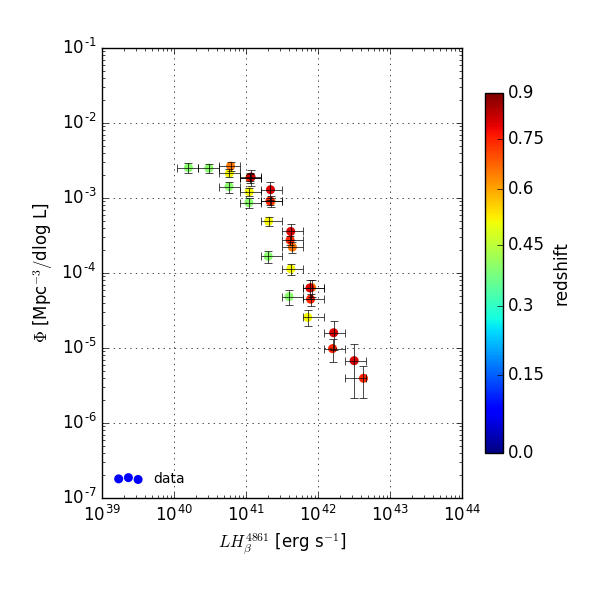
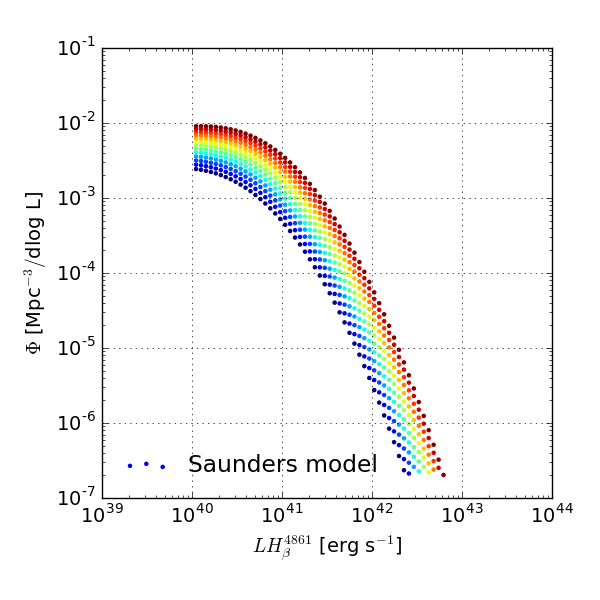
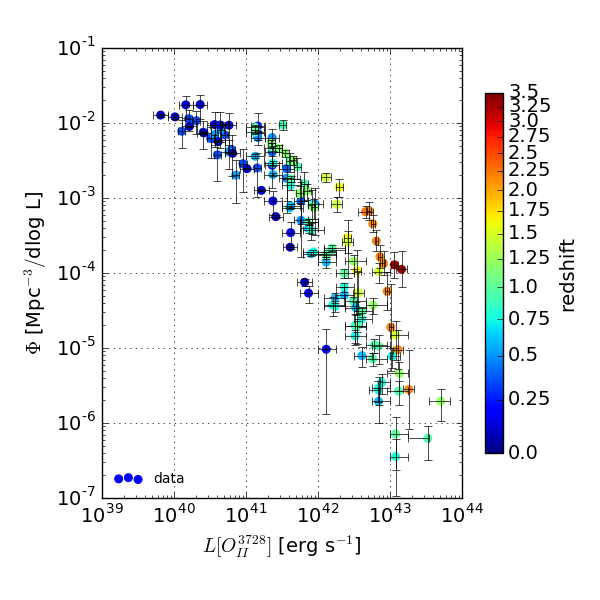
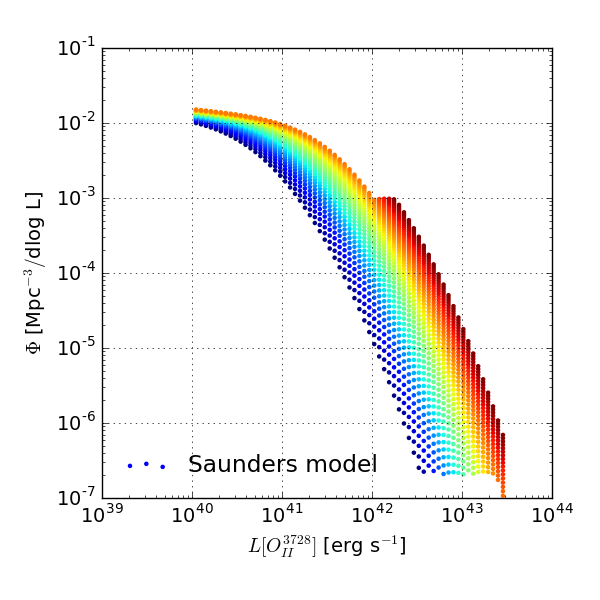
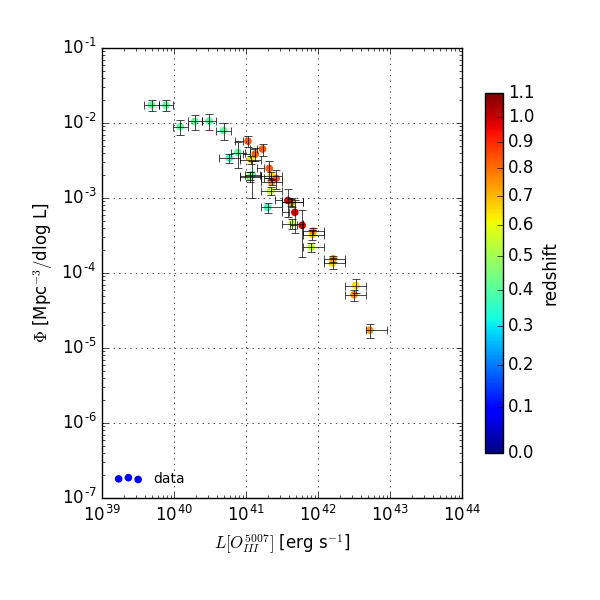
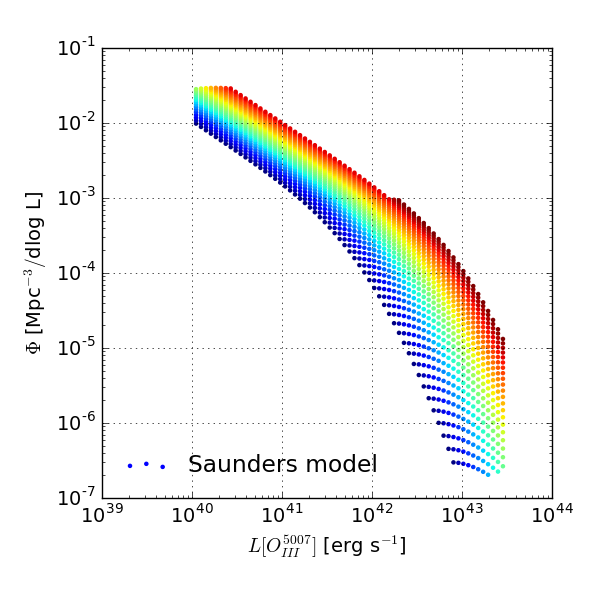
In this webpage, you can find all the data and code that was used in the paper : The evolution of the [OII], Hbeta and [OIII] emission-line luminosity functions by Johan Comparat et al.
Emission-line galaxies (ELGs) are one of the main tracers of the large-scale structure to be targeted by the next-generation dark energy surveys. To provide a better understanding of the properties and statistics of these galaxies, we have collected spectroscopic data from the VVDS, DEEP2, VIPERS deep surveys and estimated the luminosity functions (LFs) of three distinct emission lines, [OII], Hbeta and [OIII] at redshifts 0.2 to 1.3. Our measurements are based on the largest sample so far and the Hbeta LF is the first measurement at these redshifts. We have also compiled LFs from the literature that were based on independent data or covered different redshift ranges, and we fit the entire set over the whole redshift range with analytic Schechter and Saunders models, assuming a natural redshift dependence of the parameters. We find that the characteristic luminosity (Lstar) and density (phistar) of all LFs increase with redshift. The [OII] and [OIII] LF parameters increase more than that of HbetaTo obtain the data:
Please browse through these folders to retrieve the observed LFs or the fitting functions.






last update, april 2016, by J. Comparat